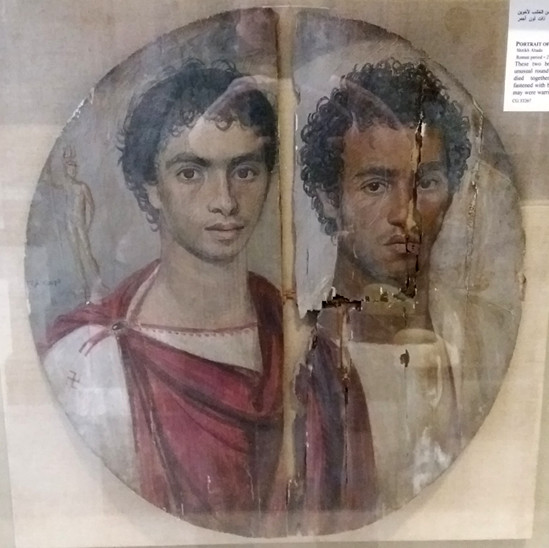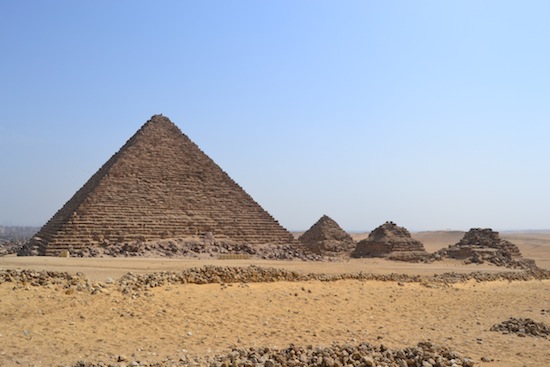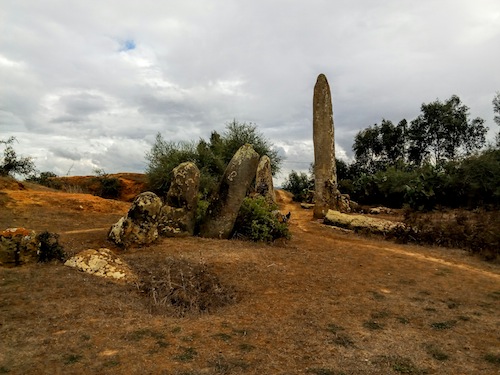Greco-Roman Treasures in the Egyptian Museum

Mummy portrait from the 2nd century AD
of two brothers who appear to have died together
The Egyptian Museum in Cairo is an addictive place. On my two writing retreats in Egypt last year I found myself returning again and again. The collections are so vast, the displays so stunning, that no matter how many times you go you always find something that bowls you over.
Much of the museum is laid out chronologically, from the predynastic era all the way up to the Greco-Roman period (332 BC – 395 AD). This last period of ancient Egypt is often overlooked except for the famous mummy portraits like the one pictured above, lifelike paintings of the deceased. The rest of the art from this time is less compelling. Some of it is overdone, almost cartoonish, but that doesn’t make it any less interesting. Here’s a small sample of what the museum had to offer.
I apologize for the quality of some of these photos. The Egyptian Museum is poorly lit and many of the cases are dirty, making good photography difficult. Hope you enjoy them anyway!


